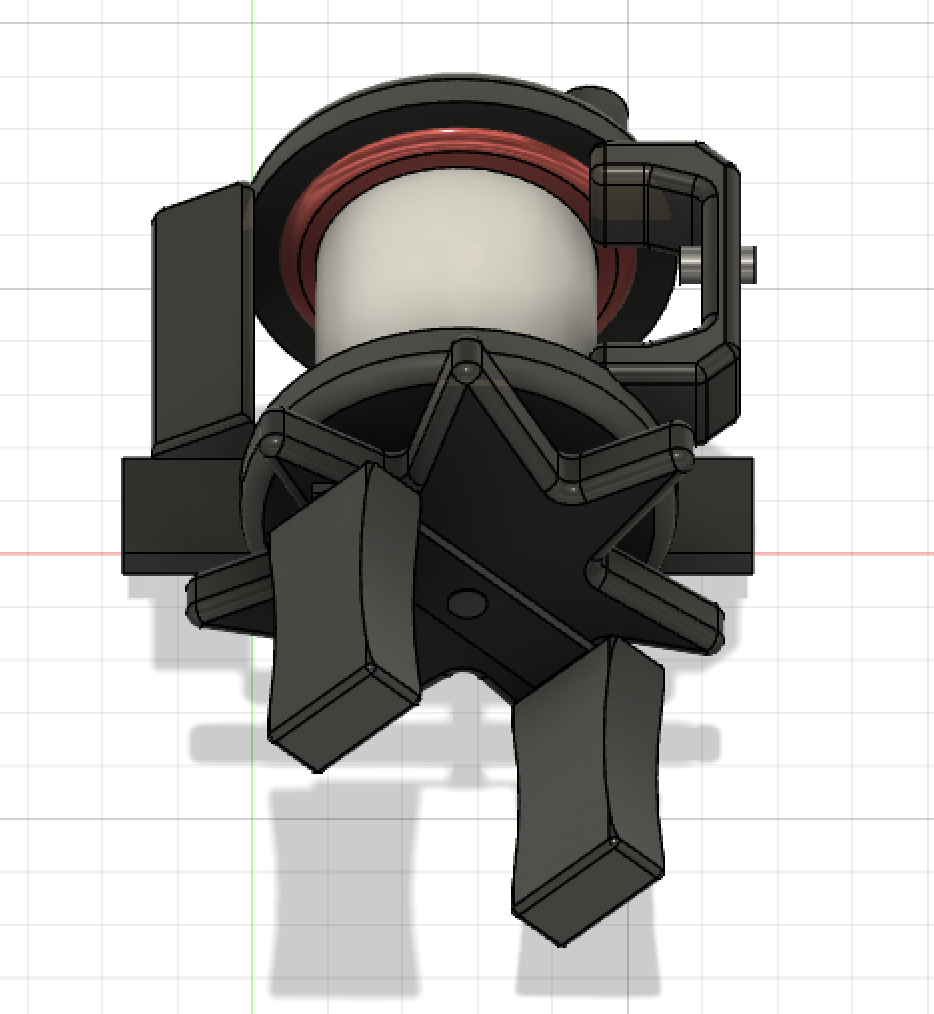


How difficult was it?
I tried to pick an item with interesting geometry to force myself to experiment with how things fit together, and that certainly made things difficult in the beginning when I had no idea what I was doing. It got much easier toward the end of the project though, and I was happy with how much I could do as I constructed my final pieces. I had a lot of fun doing the coloring, which was when I really started to see the jumble of polygons on my screen as a representation of the reel sitting in my room. Experimenting with different materials, textures, and levels of transparencies was generally a more relaxing experience than trying to actually create the model.
What elements bogged you down?
Many of the features of the program were called things that I didn’t expect, so it took a lot of googling to find some of the things I needed. I was also slowed down by some of the precision required to select certain planes or edges of objects to do things like round out corners or extend sides, which was hard to do without a mouse.
What compromises did you make?
There are a lot of shapes with unusual surfaces that were just too difficult to recreate in a timely manner with my current skill set, so I decided to focus on creating pieces that served similar purposes rather than identical components in the same locations. I also excluded a few smaller details that were very difficult to position using my laptop’s track pad. Some of the pieces in the actual reel are a lot more curved around the edges than I was able to create in my model, so I ended up relying on the corner rounding feature a lot.
I also meant to include an embedded version of the model here but unfortunately wordpress did not want that. I do not know enough about code to give it any more effort than this.
What technique or tool do you wish you had figured out sooner so that you can provide a tip for other novice users?
It took me a long time to figure out how to make non-circle holes in things, but eventually I realized it’s done by drawing a shape and extending it into the object I needed the hole in. It still feels awkward and a little unintuitive, so there may be a better way.
What humanistic uses can you envision for this tool in the areas of research or teaching?
From a very general teaching perspective, I think having students learn to use 3D modeling would help encourage observation and a detail-oriented way of thinking. Even though I’ve looked at it for hours, when I had to actually try to recreate all the features of my reel I found I had missed a lot of important pieces that I never really focused on before. I think that looking at the world through the basic shapes and features that make up the objects we see every day could be very good for students in almost every field.
1 thought on “3D Fishing Reel Model”
Comments are closed.
This is actually phenomenal. You had noted some compromises you had to make, but I am so impressed that even despite that, you were able the capture the form of something that I imagine is incredibly complex to dissect and model. But I suppose that relates to the final sentence of your post. Specifically, the objects we see in our lives are all fundamentally the result of many simple shapes combined with one another. The note you had about the value of 3D modeling to education is also really interesting to me. Nowawadays, people are introducing coding at earlier and earlier stages in education, and I’m wondering if the same should be done for 3D modeling?